 Please sign our guest book AND thank you for dropping by !
Please sign our guest book AND thank you for dropping by !
 Congratulations!
The M.A. Rousseau Family Tree has been
reviewed and chosen to bear the Golden Web Award for a fourth consecutive
year.
Darin Carter, Chairman, The International Association of Web Masters
and Designers
Congratulations!
The M.A. Rousseau Family Tree has been
reviewed and chosen to bear the Golden Web Award for a fourth consecutive
year.
Darin Carter, Chairman, The International Association of Web Masters
and Designers
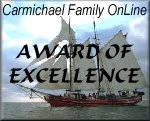 The Carmichael Online Award
I am honored to present you with the "Award of Excellence" for the
Genealogical and historical treasure that you have painstakingly researched and
shared with the World through your attractive web site.
My visit to your site was an intense and enjoyable experience. Your site was
well worth the visit!
Your site will be included in the "2006 Winners" page of my web site. Congratulations!
Regards
Matt Carmichael
Carmichael Family OnLine
http://www.millenicom.com/~mattc
The Carmichael Online Award
I am honored to present you with the "Award of Excellence" for the
Genealogical and historical treasure that you have painstakingly researched and
shared with the World through your attractive web site.
My visit to your site was an intense and enjoyable experience. Your site was
well worth the visit!
Your site will be included in the "2006 Winners" page of my web site. Congratulations!
Regards
Matt Carmichael
Carmichael Family OnLine
http://www.millenicom.com/~mattc
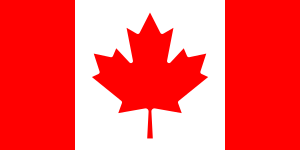 Canada
Canada
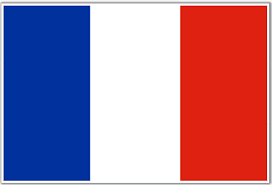 France
France

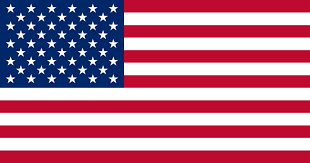
 Québec United States of America Ontario
***********************************************************
WE WOULD LIKE TO ACKNOWLEDGE AND THANK ALL THOSE WHO HAVE ASSISTED US IN THE
GATHERING OF ALL THIS INFORMATION. WITHOUT THEIR GENEROUS ASSISTANCE, THIS
PROJECT WOULD HAVE BEEN ALMOST IMPOSSIBLE TO ACCOMPLISH.
Monique & Marc-André
***********************************************************
Please check at the bottom of this page to see our - List of Last
Names - our - Links Area - and the four ways to - Get Around - this
site.
*******************************************
PLEASE NOTE
If you're going to view the videos that follows - turn the music OFF
*****************************************************
TWO VIDEO PRESENTATIONS
Québec United States of America Ontario
***********************************************************
WE WOULD LIKE TO ACKNOWLEDGE AND THANK ALL THOSE WHO HAVE ASSISTED US IN THE
GATHERING OF ALL THIS INFORMATION. WITHOUT THEIR GENEROUS ASSISTANCE, THIS
PROJECT WOULD HAVE BEEN ALMOST IMPOSSIBLE TO ACCOMPLISH.
Monique & Marc-André
***********************************************************
Please check at the bottom of this page to see our - List of Last
Names - our - Links Area - and the four ways to - Get Around - this
site.
*******************************************
PLEASE NOTE
If you're going to view the videos that follows - turn the music OFF
*****************************************************
TWO VIDEO PRESENTATIONS
 The First Video
This video depicts the Marc-Andre Rousseau ancestry and their
families in a photo story format.
You will see written information for the first 7 generations. From thereon, the information is accompanied with the relevent photographs.
The primary family names in this photo story are: Rousseau, Cloutier, Bolduc, Levesque, Ouellet, Doyon, Sergerie Mongeau, Morissette.
This presentation has some background music and is 22 minutes in
duration.
http://video.google.ca/videoplay?docid=5918331992862451901&pr=goog-
sl&hl=en-CA
Left click, highlight and copy the link shown above and paste it
into your browser. Then push on enter and you will view the photo story.
****************************************************
The Second Video
This video depicts the Monique (Mongeau) Rousseau ancestry and
their families in a photo story format.
You will see written information for the first 10 generations. From thereon, the information is accompanied with the relevent photographs.
The primary family names in this photo story are: Mongeau, Vaillancourt, Morissette, Rivard, Leblanc, Rousseau and Doyon.
This presentation has some background music and is 43 minutes in
duration.
http://video.google.ca/videoplay?docid=7913990235966198752&pr=goog-
sl&hl=en-CA
Left click, highlight and copy the link shown above and paste it
into your browser. Then push on enter and you will view the photo story.
****************************************************
Thomas Rousseau
un des premiers Ancêtres des Rousseau
d'Amérique.
Thomas Rousseau est né entre 1609 et 1632, quoique certains situent sa
naissance en 1626 à la paroisse de Gourgé (Oroux), diocèse de Poitiers, au
Poitou, en France.
Fils d'Honoré Rousseau et de Marie Boillerot, il est arrivé en Nouvelle-
France vers 1662 et il fut confirmé par Mgr. de Laval, le 23 mars 1664.
Il signe un contrat notarié, le 14 juillet 1666, s'engageant pour une période de cinq ans à titre de fermier de Jean-Baptiste Peuvret seigneur de Mesnu et de Gaudarville, à l'île d'Orléans.
Il épouse une fille du roi, Marie Madeleine Olivier, le 5 octobre 1667, à Québec. Originaire de Caudebec-en-Caux, en Normandie, où elle est née en 1636, elle est la fille de Jean Olivier et de Louise Prévost.
Ils ont eu onze enfants; Anne-Catherine, Marie-Madeleine, Genevieve, Martin, Pierre, Marguerite, Marie, Thomas, Louise, Antoine, Jean-Baptiste. Trois enfants sont décédés en bas âge.
Au recensement de 1681, Thomas et sa famille exploîte une terre de quinze arpents, la même depuis 1668, à l'île d'Orléans.
Il possède un fusil et quatre bêtes à corne.
Le 21 avril 1690, Marie Madeleine Olivier meurt alors que son petit dernier, Jean-Baptiste, n'a pas encore quatre ans.
Elle est inhumée le lendemain dans la paroisse Saint-Laurent.
Thomas a au moins 70 ans lorsqu'il devient veuf. Il ne peut supporter très
longtemps un tel veuvage. Il regarde autour de lui et trouve la perle rare. Il s'agit de Charlotte Bélanger.
Le 4 juillet 1691, l'ancêtre Thomas Rousseau épouse en seconde noce Charlotte Françoise Bélanger, veuve de Jean Langlois, dit Boisverdun, décédé en
1687. Cette dernière a une dizaine d'enfants de son premier mariage.
Née le 25 juin 1650, elle est la fille de François Bélanger, seigneur de Bonsecours et capitaine de milice de la côte de Beaupré, et de Marie Guyon. Ils ont eu un fils prénommé Guillaume.
Le matin du 11 octobre 1707, Thomas signe, devant le notaire Louis Chambalon, un document qui ressemble à son testament.
Il fait donation d'une partie de son patrimoine, avec l'accord de ses autres enfants, à Antoine, avec qui il habite à Saint-Laurent de l'île d'Orléans.
Il se sent vieux et trop fatigué pour continuer à entretenir sa terre. En retour, le fils se chargera de subvenir aux besoins de son père.
Deux des onze enfants du couple Olivier/Rousseau nous tracent des rameaux dans la présente généalogie.
La première, Anne-Catherine Rousseau, née le 19 juillet 1668, à l'Île d'Orléans, s'est mariée en 1691, avec Simon Fournier, l'arrière-petit-fils de Louis Hébert, par sa mère, Françoise Hébert, mariée à l'ancêtre Guillaume Fournier.
Le deuxième enfant, Antoine Rousseau, né et baptisé à Saint-Laurent, le 3 avril 1684, s'est marié à St-Laurent, en 1709, avec Anne-Catherine Bouffard, fille de l'ancêtre Jacques Bouffard et d'Anne Leclerc, dit le Bouteleau.
En 1739, Antoine Rousseau fait donation de la terre ancestrale de Saint- Laurent à son fils Jacques Rousseau, marié en 1744 à Véronique Bussière.
Finalement à la quatrième génération, leur fille, Marie-Joseph Rousseau, épouse en 1785, Étienne Tremblay.
Pour terminer, soulignons un fait particulièrement intéressant. Il appert que Thomas Rousseau est reconnu comme un ancêtre plus instruit que la moyenne des pionniers.
Il signe en effet tous les actes notariés qu'il fait rédiger. Son écriture est ferme, son nom bien moulé et parfois accompagné d'un paraphe, marque distincte des gens de qualité de cette époque.
On affirmer que l'ancêtre Thomas Rousseau est décédé entre le 23 mai 1712 et le 22 juillet 1715.
Au régistre paroissial de St-Thomas-de-la-Pointe à la Caille, Montmagny, Québec, il est indiqué que Thomas est vivant le 23 mai 1712 lors du mariage de son fils Jean-Baptiste.
Par contre,lors de la sépulture de Guillaume Rousseau, un autre de ses fils, et fils de Francoise-Charlotte Bélanger en date du 22 juillet 1715 à Château-Richer, Québec, il est inscrit dans le régistre paroissial de Château- Richer que Thomas Rousseau et Francoise-Charlotte Bélanger sont décédés.
Ainsi se termine la vie de Thomas Rousseau. C'est une histoire sans fin
puisqu'on ne trouve pas la date de son décès. Même les archives ne nous
donnent, malheureusement, pas cette date.
Il fut enterré à Saint-Pierre-de-la-Rivière-du-Sud.
******************************************************************
The King's Daughters
'Les Filles Du Roi'
From the time of the earliest French colonization of Québec in 1604 until
1663, there were only a handful of families living in that region.
The majority of its small population was made up of hunters, trappers, French
soldiers, a few explorers, a few priests, and some sailors.
France and England, long at odds and in competition with each other, were then attempting to expand their new colonies, to exploit the land and its resources, and to establish stronger and more viable colonies in the New World.
In 1629, the population of Québec, then the only settlement in the present
province of Québec, had a resident population of only 21.
By 1639, that number had grown to 139 from new settlers and some births. By 1662, the population had increased almost 10-fold to 1,100. By this time, the English colonies in America were growing rapidly.
About this time, the French hierarchy decided to adopt a new plan to help establish a stronger and more permanent foothold in its North American colony, which had, by then, expanded to three principle towns on the St. Lawrence River: Québec, Trois Rivières, and Montréal (known as Ville Marie back then).
The plan was to encourage single and widowed young women to go to New France (Québec), marry one of the single or widowed Frenchmen there, raise a family, and establish themselves there as permanent colonists.
Compared to France, the New World was a harsh place with its lack of amenities, its ever-present danger from rebellious Indians, its harsh winters, and its isolation from the rest of the civilized world.
It took a considerable amount of planning, time, and salesmanship on the part of those pursuing this plan to convince young women to take part in this new and risky venture.
The recruitment program was initiated around 1661 and the recruiters went to a number of cities where there were large orphanages - a good source for potential candidates.
Paris and other cities had several such orphanages where conditions, even in comparison with life in that period of time, were deplorable.
As an incentive to enlist, the young girls were to be awarded with a gift (dowry) of from 50 French pounds and up.
The Royal treasury provided the necessary funds and it was fully supported by the King of France. Thus, these recruits came to be called 'les filles du roi' -
the King's daughters.
A number of those recruited also had money and property of their own, as much as 3,000 pounds, received as an inheritance from their deceased parents.
Fifty pounds was a substantial amount of money in those days. For example, a common laborer would have to work almost a year to make such a sum and a surgeon made from 100 to 150 pounds a year.
Thus, many orphaned girls saw this as an opportunity for adventure, money,
marriage, and getting out of their situation.
Recruited during the eleven years of this program were 414 orphaned girls . From 1663 to 1673 a total of 774 'Filles du Roi' made the journey to New France.
The best year was in 1669 when 135 new 'Filles du Roi' were enlisted. In 1670, 134 girls took up the cause.
A total of 238 were from Paris, 175 from Bourgs, 46 from Rouen, 35 from La
Rochelle, and the rest from other towns and cities. Three were from other countries - England, Germany, and Portugal.
Some of the girls who were originally recruited went only as far as the port of
embarkation such as the harbor in La Rochelle or of Dieppe in Normandy.
The First Video
This video depicts the Marc-Andre Rousseau ancestry and their
families in a photo story format.
You will see written information for the first 7 generations. From thereon, the information is accompanied with the relevent photographs.
The primary family names in this photo story are: Rousseau, Cloutier, Bolduc, Levesque, Ouellet, Doyon, Sergerie Mongeau, Morissette.
This presentation has some background music and is 22 minutes in
duration.
http://video.google.ca/videoplay?docid=5918331992862451901&pr=goog-
sl&hl=en-CA
Left click, highlight and copy the link shown above and paste it
into your browser. Then push on enter and you will view the photo story.
****************************************************
The Second Video
This video depicts the Monique (Mongeau) Rousseau ancestry and
their families in a photo story format.
You will see written information for the first 10 generations. From thereon, the information is accompanied with the relevent photographs.
The primary family names in this photo story are: Mongeau, Vaillancourt, Morissette, Rivard, Leblanc, Rousseau and Doyon.
This presentation has some background music and is 43 minutes in
duration.
http://video.google.ca/videoplay?docid=7913990235966198752&pr=goog-
sl&hl=en-CA
Left click, highlight and copy the link shown above and paste it
into your browser. Then push on enter and you will view the photo story.
****************************************************
Thomas Rousseau
un des premiers Ancêtres des Rousseau
d'Amérique.
Thomas Rousseau est né entre 1609 et 1632, quoique certains situent sa
naissance en 1626 à la paroisse de Gourgé (Oroux), diocèse de Poitiers, au
Poitou, en France.
Fils d'Honoré Rousseau et de Marie Boillerot, il est arrivé en Nouvelle-
France vers 1662 et il fut confirmé par Mgr. de Laval, le 23 mars 1664.
Il signe un contrat notarié, le 14 juillet 1666, s'engageant pour une période de cinq ans à titre de fermier de Jean-Baptiste Peuvret seigneur de Mesnu et de Gaudarville, à l'île d'Orléans.
Il épouse une fille du roi, Marie Madeleine Olivier, le 5 octobre 1667, à Québec. Originaire de Caudebec-en-Caux, en Normandie, où elle est née en 1636, elle est la fille de Jean Olivier et de Louise Prévost.
Ils ont eu onze enfants; Anne-Catherine, Marie-Madeleine, Genevieve, Martin, Pierre, Marguerite, Marie, Thomas, Louise, Antoine, Jean-Baptiste. Trois enfants sont décédés en bas âge.
Au recensement de 1681, Thomas et sa famille exploîte une terre de quinze arpents, la même depuis 1668, à l'île d'Orléans.
Il possède un fusil et quatre bêtes à corne.
Le 21 avril 1690, Marie Madeleine Olivier meurt alors que son petit dernier, Jean-Baptiste, n'a pas encore quatre ans.
Elle est inhumée le lendemain dans la paroisse Saint-Laurent.
Thomas a au moins 70 ans lorsqu'il devient veuf. Il ne peut supporter très
longtemps un tel veuvage. Il regarde autour de lui et trouve la perle rare. Il s'agit de Charlotte Bélanger.
Le 4 juillet 1691, l'ancêtre Thomas Rousseau épouse en seconde noce Charlotte Françoise Bélanger, veuve de Jean Langlois, dit Boisverdun, décédé en
1687. Cette dernière a une dizaine d'enfants de son premier mariage.
Née le 25 juin 1650, elle est la fille de François Bélanger, seigneur de Bonsecours et capitaine de milice de la côte de Beaupré, et de Marie Guyon. Ils ont eu un fils prénommé Guillaume.
Le matin du 11 octobre 1707, Thomas signe, devant le notaire Louis Chambalon, un document qui ressemble à son testament.
Il fait donation d'une partie de son patrimoine, avec l'accord de ses autres enfants, à Antoine, avec qui il habite à Saint-Laurent de l'île d'Orléans.
Il se sent vieux et trop fatigué pour continuer à entretenir sa terre. En retour, le fils se chargera de subvenir aux besoins de son père.
Deux des onze enfants du couple Olivier/Rousseau nous tracent des rameaux dans la présente généalogie.
La première, Anne-Catherine Rousseau, née le 19 juillet 1668, à l'Île d'Orléans, s'est mariée en 1691, avec Simon Fournier, l'arrière-petit-fils de Louis Hébert, par sa mère, Françoise Hébert, mariée à l'ancêtre Guillaume Fournier.
Le deuxième enfant, Antoine Rousseau, né et baptisé à Saint-Laurent, le 3 avril 1684, s'est marié à St-Laurent, en 1709, avec Anne-Catherine Bouffard, fille de l'ancêtre Jacques Bouffard et d'Anne Leclerc, dit le Bouteleau.
En 1739, Antoine Rousseau fait donation de la terre ancestrale de Saint- Laurent à son fils Jacques Rousseau, marié en 1744 à Véronique Bussière.
Finalement à la quatrième génération, leur fille, Marie-Joseph Rousseau, épouse en 1785, Étienne Tremblay.
Pour terminer, soulignons un fait particulièrement intéressant. Il appert que Thomas Rousseau est reconnu comme un ancêtre plus instruit que la moyenne des pionniers.
Il signe en effet tous les actes notariés qu'il fait rédiger. Son écriture est ferme, son nom bien moulé et parfois accompagné d'un paraphe, marque distincte des gens de qualité de cette époque.
On affirmer que l'ancêtre Thomas Rousseau est décédé entre le 23 mai 1712 et le 22 juillet 1715.
Au régistre paroissial de St-Thomas-de-la-Pointe à la Caille, Montmagny, Québec, il est indiqué que Thomas est vivant le 23 mai 1712 lors du mariage de son fils Jean-Baptiste.
Par contre,lors de la sépulture de Guillaume Rousseau, un autre de ses fils, et fils de Francoise-Charlotte Bélanger en date du 22 juillet 1715 à Château-Richer, Québec, il est inscrit dans le régistre paroissial de Château- Richer que Thomas Rousseau et Francoise-Charlotte Bélanger sont décédés.
Ainsi se termine la vie de Thomas Rousseau. C'est une histoire sans fin
puisqu'on ne trouve pas la date de son décès. Même les archives ne nous
donnent, malheureusement, pas cette date.
Il fut enterré à Saint-Pierre-de-la-Rivière-du-Sud.
******************************************************************
The King's Daughters
'Les Filles Du Roi'
From the time of the earliest French colonization of Québec in 1604 until
1663, there were only a handful of families living in that region.
The majority of its small population was made up of hunters, trappers, French
soldiers, a few explorers, a few priests, and some sailors.
France and England, long at odds and in competition with each other, were then attempting to expand their new colonies, to exploit the land and its resources, and to establish stronger and more viable colonies in the New World.
In 1629, the population of Québec, then the only settlement in the present
province of Québec, had a resident population of only 21.
By 1639, that number had grown to 139 from new settlers and some births. By 1662, the population had increased almost 10-fold to 1,100. By this time, the English colonies in America were growing rapidly.
About this time, the French hierarchy decided to adopt a new plan to help establish a stronger and more permanent foothold in its North American colony, which had, by then, expanded to three principle towns on the St. Lawrence River: Québec, Trois Rivières, and Montréal (known as Ville Marie back then).
The plan was to encourage single and widowed young women to go to New France (Québec), marry one of the single or widowed Frenchmen there, raise a family, and establish themselves there as permanent colonists.
Compared to France, the New World was a harsh place with its lack of amenities, its ever-present danger from rebellious Indians, its harsh winters, and its isolation from the rest of the civilized world.
It took a considerable amount of planning, time, and salesmanship on the part of those pursuing this plan to convince young women to take part in this new and risky venture.
The recruitment program was initiated around 1661 and the recruiters went to a number of cities where there were large orphanages - a good source for potential candidates.
Paris and other cities had several such orphanages where conditions, even in comparison with life in that period of time, were deplorable.
As an incentive to enlist, the young girls were to be awarded with a gift (dowry) of from 50 French pounds and up.
The Royal treasury provided the necessary funds and it was fully supported by the King of France. Thus, these recruits came to be called 'les filles du roi' -
the King's daughters.
A number of those recruited also had money and property of their own, as much as 3,000 pounds, received as an inheritance from their deceased parents.
Fifty pounds was a substantial amount of money in those days. For example, a common laborer would have to work almost a year to make such a sum and a surgeon made from 100 to 150 pounds a year.
Thus, many orphaned girls saw this as an opportunity for adventure, money,
marriage, and getting out of their situation.
Recruited during the eleven years of this program were 414 orphaned girls . From 1663 to 1673 a total of 774 'Filles du Roi' made the journey to New France.
The best year was in 1669 when 135 new 'Filles du Roi' were enlisted. In 1670, 134 girls took up the cause.
A total of 238 were from Paris, 175 from Bourgs, 46 from Rouen, 35 from La
Rochelle, and the rest from other towns and cities. Three were from other countries - England, Germany, and Portugal.
Some of the girls who were originally recruited went only as far as the port of
embarkation such as the harbor in La Rochelle or of Dieppe in Normandy.
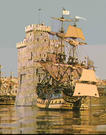


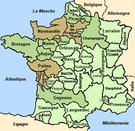 When they saw what they were getting into, their minds quickly changed and withdrew from the 'adventure.'
The first stop in la Nouvelle-France was Québec (city) where most of them disembarked and remained.
Shortly after their arrival, the girls were usually escorted to a place where they would meet eligible bachelors, and the rest is history.
The number of single girls available to the French men in Québec were few and far between before this program was initiated. Consequently, some of the men married either local Indian girls or daughters of pioneer Québec families.
The Church, seeing the need for female companions and wives for the growing number of bachelors in Québec, also supported this program. Within one year of their arrival most of the girls got married and the dowry promised them
from the Royal treasury was received.
Some of the King's Daughters survived as many as four husbands. A few returned to France later on with their husbands. But, most of them remained in New France for the rest of their natural lives.
The majority of these girls were 'ordinary' in that sense, but a few were so-called 'filles de qualité' from the bourgeois class, that is, daughters of business, professional or military officer families.
They settled mainly in the Québec (city) area, raised their families, and led a relatively quiet but hard-working life.
Very few of these girls became societal problems.
Only five ever got into trouble with the courts for reasons of adultery, prostitution, or debauchery. Only one, Marie Quequejeu, widow of Pierre Rivaut,
was executed in 1684 by the authorities for a very serious crime (actual records lost).
On the same day, her son-in-law, Pierre Doret, a 'coureur de bois,' was also executed.
Civil and Church laws were very strict at that time. As a whole, these pioneer women faired quite well considering the new and unique obstacles, hardships, and environment they had to face and endure.
They surely had to be a very hardy, courageous and resolute group of young ladies.
On the lighter side, the reason Québec girls are said to be prettier than
those from the Trois Rivières and Montréal areas is that the ships made their
first stop at the port of Québec.
Consequently, the Québec boys had 'first pick.'
All the left-overs were sent up-river to the other two settlements.
This, of course, is a joke among the folks in Québec
city.
You are visitor number
<
since January 18th. 2004.
When they saw what they were getting into, their minds quickly changed and withdrew from the 'adventure.'
The first stop in la Nouvelle-France was Québec (city) where most of them disembarked and remained.
Shortly after their arrival, the girls were usually escorted to a place where they would meet eligible bachelors, and the rest is history.
The number of single girls available to the French men in Québec were few and far between before this program was initiated. Consequently, some of the men married either local Indian girls or daughters of pioneer Québec families.
The Church, seeing the need for female companions and wives for the growing number of bachelors in Québec, also supported this program. Within one year of their arrival most of the girls got married and the dowry promised them
from the Royal treasury was received.
Some of the King's Daughters survived as many as four husbands. A few returned to France later on with their husbands. But, most of them remained in New France for the rest of their natural lives.
The majority of these girls were 'ordinary' in that sense, but a few were so-called 'filles de qualité' from the bourgeois class, that is, daughters of business, professional or military officer families.
They settled mainly in the Québec (city) area, raised their families, and led a relatively quiet but hard-working life.
Very few of these girls became societal problems.
Only five ever got into trouble with the courts for reasons of adultery, prostitution, or debauchery. Only one, Marie Quequejeu, widow of Pierre Rivaut,
was executed in 1684 by the authorities for a very serious crime (actual records lost).
On the same day, her son-in-law, Pierre Doret, a 'coureur de bois,' was also executed.
Civil and Church laws were very strict at that time. As a whole, these pioneer women faired quite well considering the new and unique obstacles, hardships, and environment they had to face and endure.
They surely had to be a very hardy, courageous and resolute group of young ladies.
On the lighter side, the reason Québec girls are said to be prettier than
those from the Trois Rivières and Montréal areas is that the ships made their
first stop at the port of Québec.
Consequently, the Québec boys had 'first pick.'
All the left-overs were sent up-river to the other two settlements.
This, of course, is a joke among the folks in Québec
city.
You are visitor number
<
since January 18th. 2004.